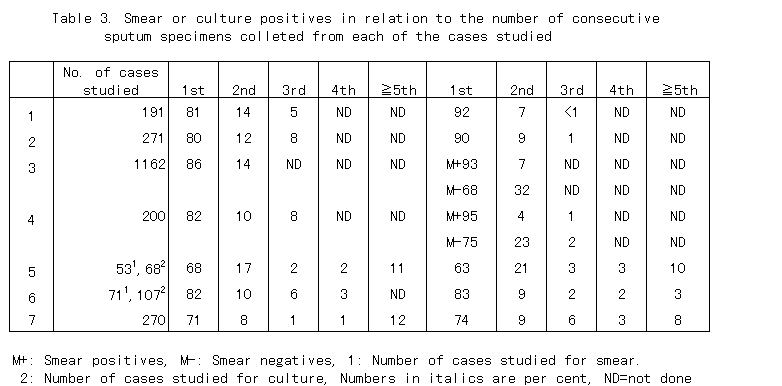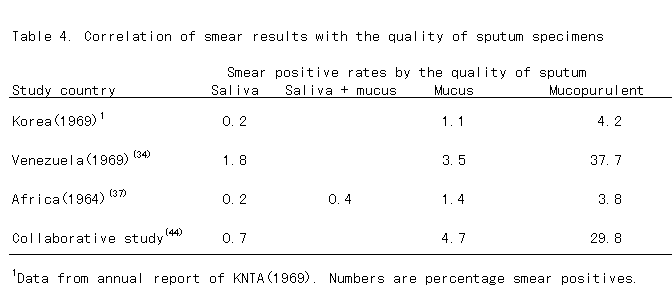study (Table 2). However, the performance is not so easy that it is not widely practiced in the fields.

3. Number of specimens to be collected for diagnosis
How many sputum specimens should be collected from one suspect in order to establish the diagnosis? As seen in Table 3, most of the previous studies showed that 68 to 86% of smear-positive cases could have been diagnosed with the first sputum specimen and the second specimens yielded 10-17% additional positives.
More than two specimens, however, did not increase additional positives significantly. Hence, a minimum of two or three specimens are required to establish the diagnosis.

In order to register a case and enrol on treatment, it requires at least two smear-positive sputum. If there is only one smear-positive sputum (and two are negative), diagnosis can be made by a medical officer with further examinations (for example, X-ray).
4. Quality of sputum specimen
Quality of sputum specimens affect to the case-yield rate to a great extent as seen in Table 4. Mucopurulent sputum specimens produced approximately 20 times more positives on smear and about five times more positives on culture examination than the salivary specimens. It must be emphasized to the peripheral health workers, who are responsible for sputum collection.

D. Storage and transport of sputum specimens
Although it is desirable to examine sputum specimens as soon as possible after collection, under programme condition, the specimens often leave unexamined for long period of time in a considerably high ambient temperature if they are to be transported to the other laboratory for culture or DST, as is often the case in many countries. Under such circumstance, especially in summer, high contamination rate and a significant loss of viability of tubercle bacilli are inevitable if sputum culture delayed for a long time. Staining property of bacilli, however, is not affected by storage of sputum up to 3-4 weeks at room temperature. A study done with smear-positive sputum in a tropical country, where ambient temperature during study period was approximately 25-30 ℃, showed that storage up to 28 days did not affect smear results, but none showed positive on culture (Table 5). We have observed similar findings. Storage of sputum specimens for 2-3 weeks at 25 ℃ caused contamination in 17% of culture media and
BACK CONTENTS NEXT